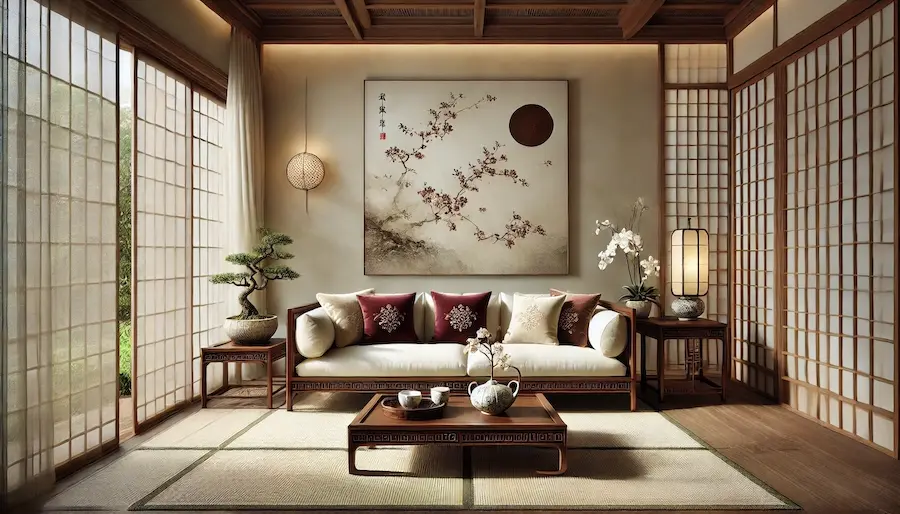An Asian-inspired living room embodies tranquility and harmony, drawing from the rich design traditions of various Asian cultures. This style emphasizes natural materials, minimalist aesthetics, and a seamless connection with nature, creating a serene and balanced environment.
History and Origins of Asian-Inspired Design
Asian-inspired interior design encompasses elements from diverse cultures, including Japanese, Chinese, and Southeast Asian traditions. Central to these designs is the concept of harmony with nature, simplicity, and the use of natural materials. Japanese design, for instance, is known for its minimalist approach and the use of shōji screens and tatami mats, reflecting a deep respect for nature and impermanence.
Key Features of an Asian-Inspired Living Room
- Natural Materials: Incorporate elements like bamboo, rattan, and wood to bring warmth and texture, reflecting the natural world.
- Minimalist Aesthetics: Embrace simplicity with uncluttered spaces, focusing on essential furnishings that offer both functionality and beauty.
- Neutral and Earthy Color Palettes: Utilize soft, natural tones such as beige, brown, and muted greens to create a calming atmosphere.
- Indoor-Outdoor Connection: Design layouts that facilitate a seamless flow between indoor and outdoor spaces, often through the use of large windows or sliding doors.
- Cultural Accents: Incorporate traditional Asian art, calligraphy, or decorative items to add authenticity and cultural depth.
Applications of Asian-Inspired Design in Living Rooms
- Shoji Screens: Use sliding shōji screens to divide spaces flexibly, allowing for privacy while maintaining an open feel.
- Low-Profile Furniture: Opt for low seating arrangements, such as floor cushions or low sofas, to create an intimate and grounded atmosphere.
- Natural Light: Maximize natural light to enhance the sense of openness and connection with the outdoors.
- Zen Gardens: Incorporate small indoor zen gardens or bonsai plants to bring elements of nature inside, promoting tranquility.
Considerations When Designing an Asian-Inspired Living Room
- Balance and Harmony: Ensure that all elements are in harmony, avoiding overcrowding and maintaining a balanced composition.
- Quality of Materials: Choose high-quality, natural materials to reflect the authenticity and craftsmanship inherent in Asian design.
- Personalization: While adhering to traditional design principles, incorporate personal touches that reflect your individual style and preferences.
Conclusion
An Asian-inspired living room offers a serene and harmonious space that blends natural materials, minimalist design, and cultural elements. By focusing on simplicity, balance, and a connection with nature, you can create a tranquil environment that reflects the timeless beauty of Asian design traditions.
